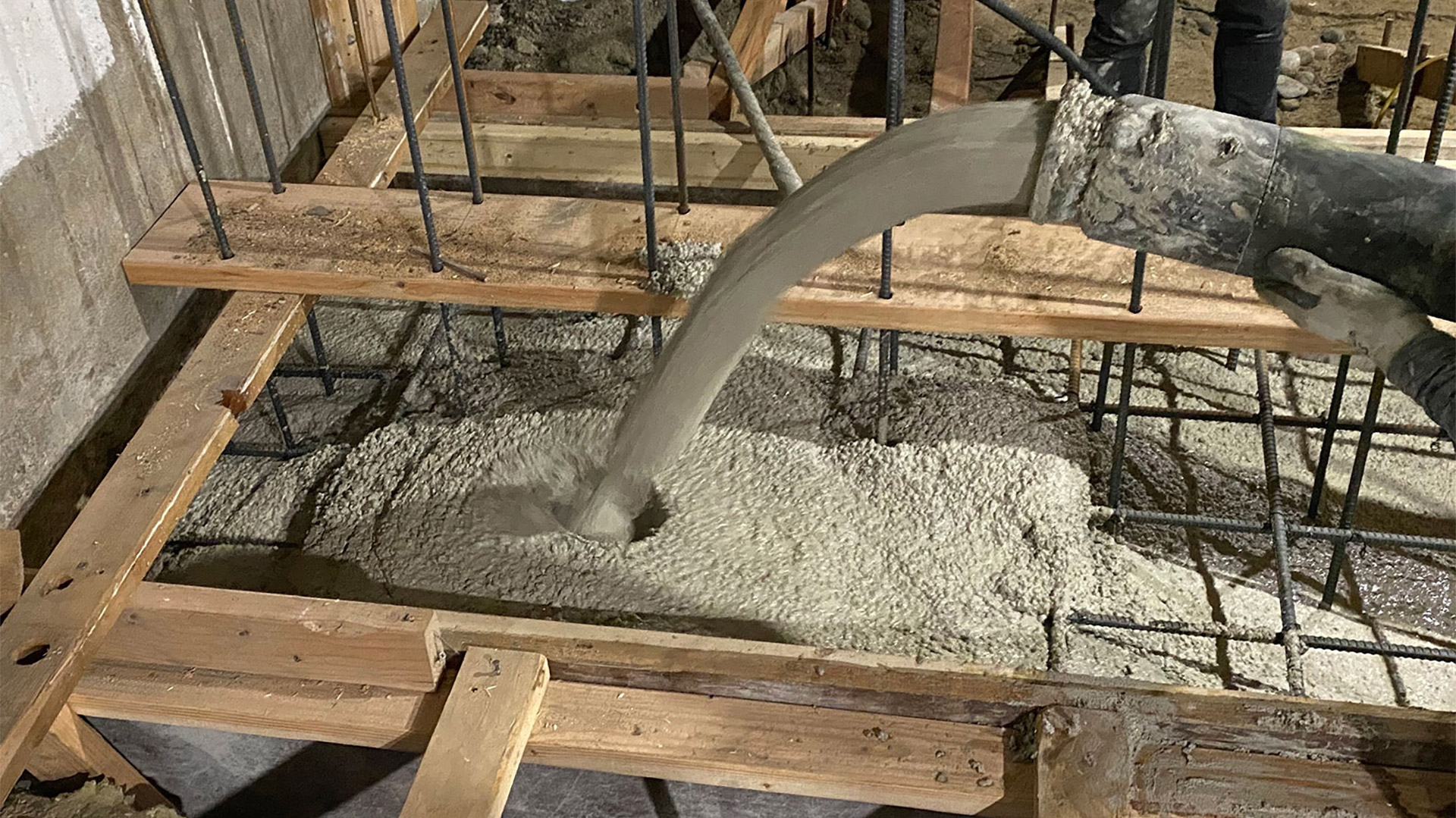Cleaner concrete
An alum’s cement alternative could significantly reduce carbon dioxide emissions from concrete production.

Last summer, in the dusty basement of a building in Seattle, workers poured about 60 tons of concrete for a renovation on a historic building. To an outsider, it looked like just another job site. Even to the workers, it was more or less business as usual.
In fact, the messy, unglamorous occasion marked a milestone in the race to reduce greenhouse-gas pollution. The pour used cement-free concrete—a big deal because the global cement industry accounts for as much as 7% of human-caused carbon dioxide emissions. And concrete is the second most-used substance in the world after water.
Instead of mixing Portland cement with water, which creates a paste that binds to materials like sand and rock to make concrete, the Seattle pour used a more sustainable binding material developed by the startup C-Crete Technologies. Rouzbeh Savary, PhD ’11, the company’s founder and president, was thrilled that the work went on as normal, since cleaning up the large and conservative construction industry will require a seamless, inexpensive transition.
C-Crete’s materials bind with locally available mineral feedstocks and industrial by-products to make cement-free concrete—and they can be manufactured in a process that doesn’t require the high temperatures needed to produce Portland cement. The company says C-Crete’s binder also absorbs carbon dioxide over time, making the material even greener.
Using local materials is especially key, Savary says: “Cement’s use is ubiquitous and there is no need to ship it across the globe.”
After winning the MIT $100K Entrepreneurship Competition with his pitch for a lower-carbon alternative to cement, Savary founded C-Crete in 2010. Over the next decade, he tinkered with material combinations to replace the traditional binder. “In our lab we probably identified around 2,000 formulas that didn’t work,” he says. The molecular combination C-Crete finally settled on is still under wraps as the company awaits its patents, but third-party testing has found that it meets the performance requirements of Portland cement, such as strength and flowability.
“If a new product is complicated to use or behaves differently, contractors and workers won’t switch,” Savary says. “We wanted to make C-Crete as easy and as close as possible to conventional practices.” Companies that operate trucks with spinning cement containers can swap out Portland cement for C-Crete and mix as usual. “It’s the same ratio of gravel to cement and sand to cement and admixtures,” he says.
C-Crete’s current production facility can produce tens of tons of its binder per day. A typical cement manufacturer can produce more than 2,000 tons a day. But the company plans to partner with manufacturers to scale up quickly, and Savary has received inquiries from architects, engineers, construction companies, and building owners around the world.
This fall, the US Department of Energy awarded the company nearly $3 million to develop ways to use carbon dioxide captured from the air in its concrete, which would make it carbon negative, and to expand the types of materials it can use.
“Since my time at MIT, when we didn’t see as much interest from the market, everything has changed,” Savary says. “We seem to be at the tipping point.”
Keep Reading
Most Popular
The Biggest Questions: What is death?
New neuroscience is challenging our understanding of the dying process—bringing opportunities for the living.
Google DeepMind used a large language model to solve an unsolved math problem
They had to throw away most of what it produced but there was gold among the garbage.
Unpacking the hype around OpenAI’s rumored new Q* model
If OpenAI's new model can solve grade-school math, it could pave the way for more powerful systems.
10 Breakthrough Technologies 2024
Every year, we look for promising technologies poised to have a real impact on the world. Here are the advances that we think matter most right now.
Stay connected
Get the latest updates from
MIT Technology Review
Discover special offers, top stories, upcoming events, and more.